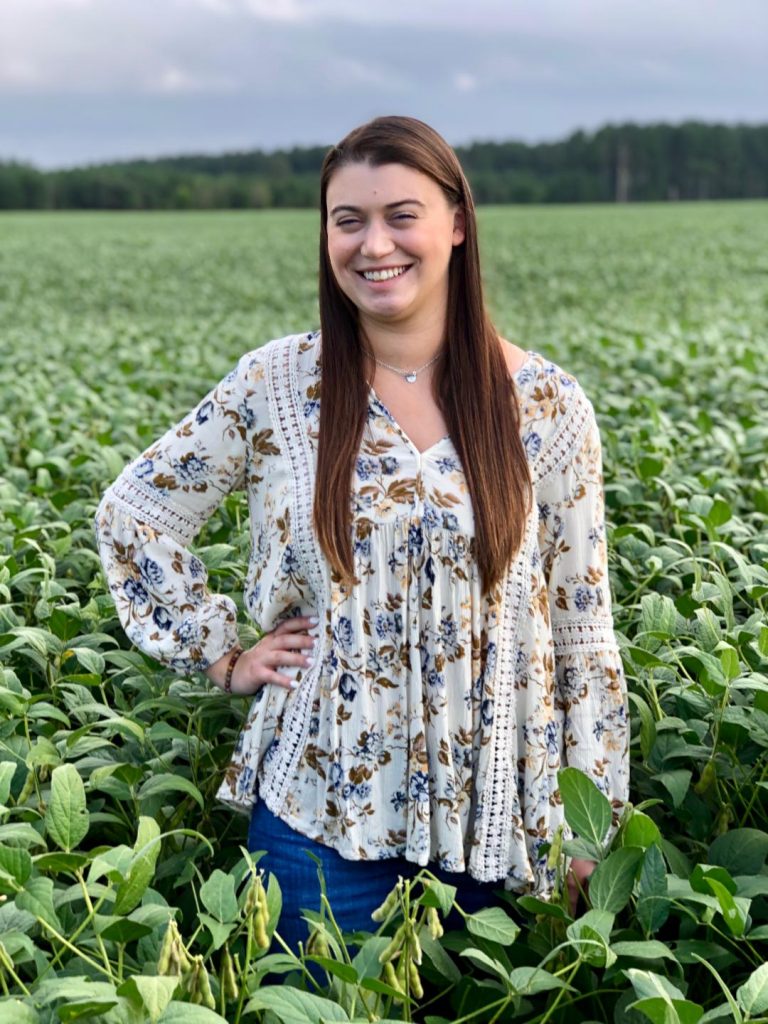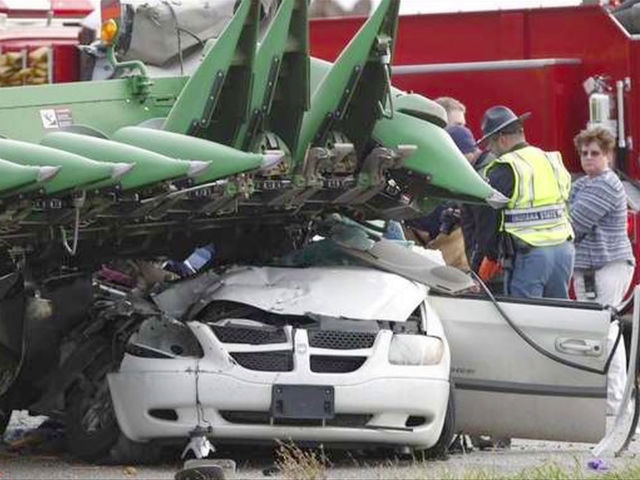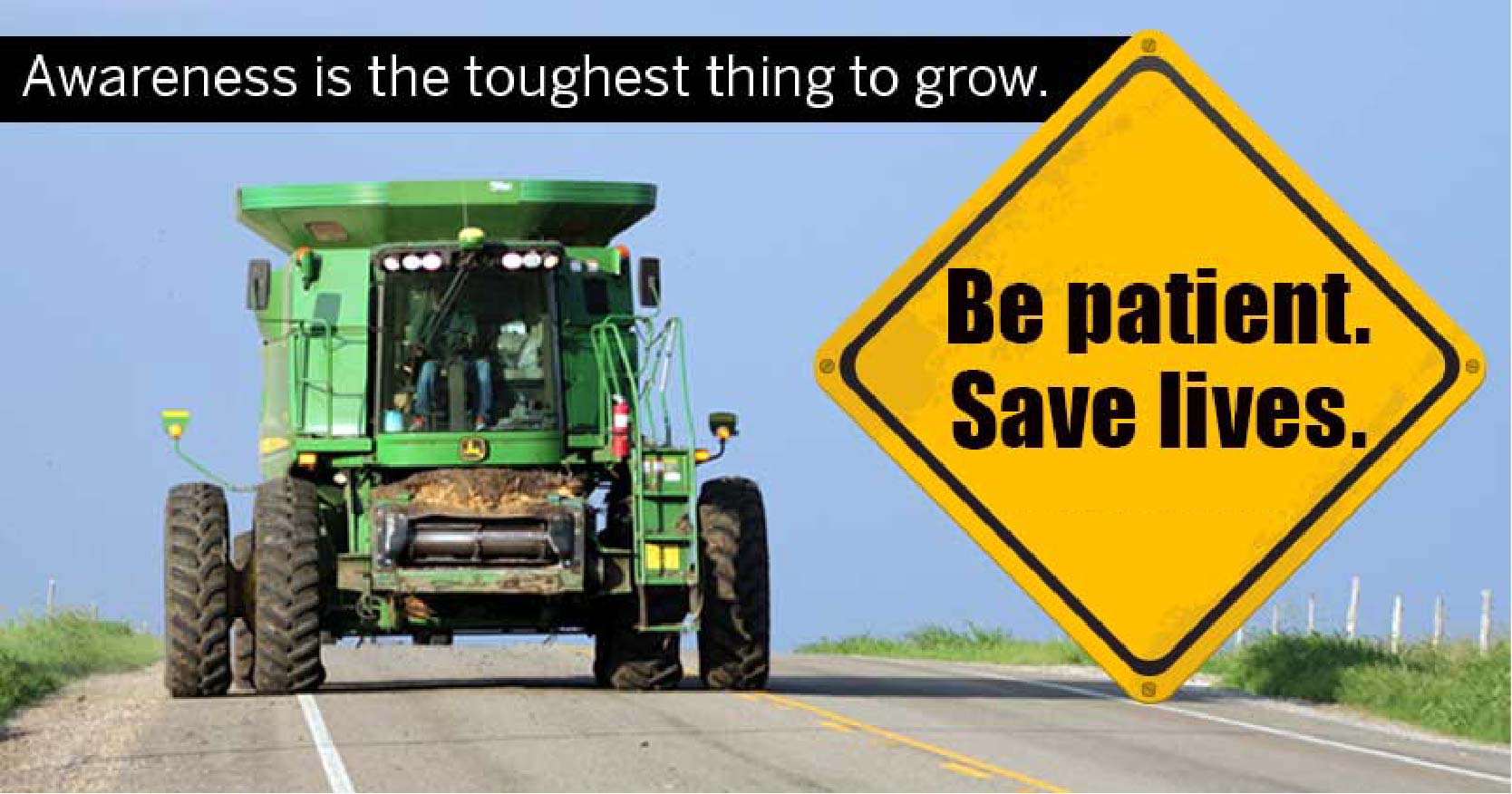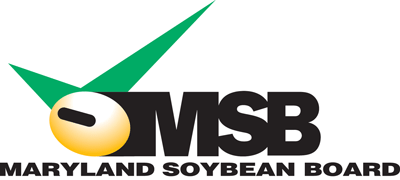Maryland Soybean Board Designates New Executive Director
The Maryland Soybean Board (MSB) is pleased to announce the selection of Danielle Bauer as the newly appointed Executive Director.
“Danielle has established a good working relationship with farmers and stakeholders across Maryland,” stated Travis Hutchison, MSB Chair. “I am confident that she will be an excellent executive director for our soybean board and be a strong voice for soy farmers.”

Danielle grew up on her family’s grain and livestock farm in Howard County, Maryland. Farming in an increasingly suburban area gave her unique insight and a strong passion for agriculture from a young age. She went on to study agriculture and natural resources at West Virginia University, and after graduating, returned home to make a positive impact on the local agricultural industry.
Most recently, Danielle worked as the Programs and Public Relations Director at Thompson Ag Consulting where she worked with a variety of agricultural and natural resource organizations. Her work with groups, including the Maryland Grain Producers Utilization Board and Maryland Pork Producers Association, gave her experience working with commodity groups and checkoff programs. She is also a graduate of LEAD Maryland, Wheat Industry Leaders of Tomorrow, and completed the American Farm Bureau Federation’s Women’s Leadership Committee Communications Boot Camp.
“I am honored by the confidence and support shown to me by the Board of Directors,” said Bauer. “I look forward to bringing my ag knowledge and expertise to the soybean industry.”
Danielle is also actively involved with the Howard County Farm Bureau, Miss Maryland Agriculture Contest, serves on the county’s Agriculture Education Advisory Committee, and is a Superintendent at the County Fair. In her spare time, Danielle enjoys spending time on the farm with her family, fiancé Matthew, and dog Sammy.
MSB said goodbye to Susanne Zilberfarb as she moves on to take the executive director post at the Maryland Agricultural Education Foundation. Susanne worked for the Board for 25 years, first in communications and then as executive director.
“The board would like to express our thanks to Susanne for her outstanding service to the soy industry,” commented Hutchison. “We are pleased to see that she will continue working within our ag family.”
Maryland farmers plant about 500,000 acres of soybeans each year, and the crop generates approximately $200 million in value to the state. The Maryland Soybean Board is funded by the national soybean checkoff program, which assesses one-half of one percent of the net market value of soybeans at the first point of sale. The board consists of ten volunteer farmer-directors and directs funds for research, marketing and education programs to benefit the Maryland soybean industry.
Maryland Soybean Board Seeks Research Proposals
(SALISBURY, MARYLAND) – September 10, 2019 – Soybean researchers seeking funding from the Maryland Soybean Board for new soybean research projects to be conducted during the 2020 growing season are asked to submit a “pre-proposal” by Oct. 15.
“The pre-proposal process gives us the opportunity to greenlight projects that are aligned with our priorities, and to encourage researchers to further develop ones that might need more work,” says Brian Johnson, chairman of the MSB Research Committee and Somerset County, Md., farmer. “It also allows researchers to ‘test the waters’ with new ideas without having to go through the effort of completing a full proposal.”
Pre-proposals must be submitted using the application form available at www.mdsoy.com/research.
Researchers are required to keep their summary statements to “two to three sentences” and should not attach additional pages.
Researchers who plan to submit proposals to continue previously funded research are not required to submit a pre-proposal.
Researchers will be notified of their selection to submit full proposals during the first week of November.
The Maryland Soybean Board administers soybean checkoff funds for soybean research, marketing and education programs in the state. It is funded by farmers through an assessment of one-half of one percent of the net market value of soybeans at their first point of sale. One-half of the checkoff funds stay in Maryland for programs; the other half is sent to the United Soybean Board.
In Maryland, farmers grow about a half a million acres of soybeans, producing more than 20 million bushels of beans each year. With a value of more than $175 million to the state’s economy, soybeans are one of Maryland’s top crops. For more information on the Maryland Soybean Board, visit www.mdsoy.com.
# # #
For More Information:
Susanne Zilberfarb, Executive Director, Maryland Soybean Board
Office: 410.430.2613
susanne@mdsoy.com
Maryland Soybean Board Seeks Changes to Improve Road Safety
 Auto crashes involving farm vehicles or equipment can be costly both in terms of property damage and injuries, and in some circumstances, result in fatalities. The Maryland Soybean Board (MSB) wants to minimize these occurrences.
Auto crashes involving farm vehicles or equipment can be costly both in terms of property damage and injuries, and in some circumstances, result in fatalities. The Maryland Soybean Board (MSB) wants to minimize these occurrences.
“We’ve had many farmers report of incidents where they had to drive off the road to avoid a vehicle trying to unsafely pass them with oncoming traffic headed their way,” commented Travis Hutchison, Chairman of the Maryland Soybean Board. “Farm vehicles and equipment must travel public roads in order to reach outlying fields and to transport products to market or processing facilities. We want to improve safety on rural roads for our farmers and our neighbors in the community.”
MSB conducted a study to research the prevalence of farm equipment related accidents and investigate potential solutions. Hutchison announced the release of the Maryland Rural Road Safety Study at the Maryland Commodity Classic on July 25.
Study Results
Findings showed that the majority (<70%) of farm vehicle crashes (FVCs) were listed as property damage crashes, while roughly 28% were injury crashes and slightly less than 2% of FVCs were fatal crashes. The most common result of FVCs was contact between two moving vehicles. Most FVCs were rear-end accidents or single vehicle incidents.
The number of FVCs are growing every year. They most frequently occur June through October. Over 75% of FVCs occurred during daylight hours, with only 16.5% occurring in the dark. Fewer than 10% of FVCs took place during dawn or dusk light conditions. Over 72% of FVCs occurred in clear weather, while 9% occurred during cloudy conditions and 9% in precipitation (rain, sleet, or snow).
Most FVCs occur on two-way undivided roads (52.8%), followed by two-way divided highways with barriers or medians (21.9%). The largest number of incidents occurred on state highways (38%), followed closely by county roads (30%).
Recommended Actions
“Education for farmers to know how to best prevent accidents is one of our recommendations, as this will be a continuing issue with Maryland’s population growth,” continued Hutchison. “It’s also imperative the that non-farming public understand how to safely travel roads where farm equipment is present.”

Recommendations for public programming, inclusion of farm vehicle safety in driver’s education training, and education campaigns targeted to spring planting and fall harvest are several ways identified to improve the public’s understanding of rural road safety.
Studies of road characteristics found that FVCs are more likely to occur on roads with speed limits over 50 mph, curves, high traffic density, and/or smaller lanes/road widths. The report identifies how roadway design, maintenance and improvement efforts can attempt to mitigate these problems. Recognizing farm vehicles in the state Strategic Highway Safety Plan would help bring awareness to the unique needs of operating farm equipment and reduce injuries on Maryland roadways.
In the spring, the Maryland Farm Bureau, Maryland Department of Agriculture and Maryland State Highway Administration worked on posting road signs that warn of tractors and slow-moving farm equipment. This is a beneficial strategy that MSB would like to see expanded, particularly during spring tillage and fall harvest when agricultural traffic is greater and near locations such as rural storage facilities or markets.
“We commend the efforts underway and invite more partners to help in the effort to lower the accident rate on Maryland roads,” Hutchison concluded.
The Maryland Rural Roads Safety Study is available at www.mdsoy.com/md-rural-road-safety-study/.
Maryland farmers plant about 500,000 acres of soybeans each year, and the crop generates approximately $200 million in value to the state.

The Maryland Soybean Board is funded by the national soybean checkoff program, which assesses one-half of one percent of the net market value of soybeans at the first point of sale. The board consists of ten volunteer farmer-directors and directs funds for research, marketing and education programs to benefit the Maryland soybean industry.
# # #
For More Information:
Susanne Zilberfarb, Executive Director
Maryland Soybean Board
Office: 410.430.2613
Maryland Soybean Board Seeks Executive Director Applicants
The Maryland Soybean Board is accepting applications from experienced, reliable and task-oriented individuals for the position of Executive Director. The ideal candidate will be familiar with Maryland agriculture, highly self-motivated, professional, and capable of prioritizing tasks and building strategic partnerships.
The Executive Director serves the board and will be responsible for performing a number of administrative and leadership duties in support of the board’s mission. These include facilitating with the Board the planning, evaluation, coordination, and implementation of informational, promotional, and educational programs to benefit Maryland soybean farmers; contracting, Board and organizational relations, and building grower opportunities for profit through promotion, research and educational activities; developing an annual budget and projects with goals and being accountable for activities of the checkoff program; and maintaining the records of the board as described in the bylaws and policy handbook.
“The Maryland Soybean Board conducts a robust set of research, marketing and education projects that support the interests of Maryland soybean farmers,” says Travis Hutchison, MSB Chairman, who is a soybean farmer from Cordova, Md. “Our vision is to be a leader in Maryland agriculture by investing soybean checkoff dollars to improve production, the operating environment and the market.”
Applicants should submit a cover letter, resume and the names and contact information of three references by Aug. 20, 2109, to Hutchison at hutchisonbrothers@hotmail.com. Questions may be directed to him at (410) 924-3008. Information about the board’s work may be found at www.mdsoy.org. This is a part-time, contractual position which does not offer benefits.
Maryland farmers plant about 500,000 acres of soybeans each year, and the crop generates approximately $200 million in value to the state.
The Maryland Soybean Board is funded by the national soybean checkoff program, which assesses one-half of one percent of the net market value of soybeans at the first point of sale. The board consists of ten volunteer farmer-directors and directs funds for research, marketing and education programs to benefit the Maryland soybean industry.
Archives
No Results Found
The page you requested could not be found. Try refining your search, or use the navigation above to locate the post.
